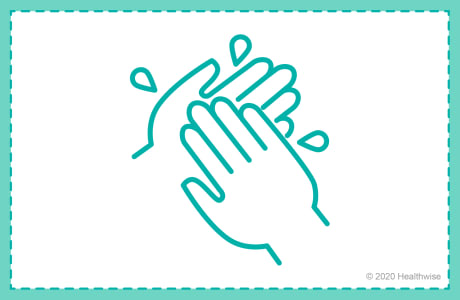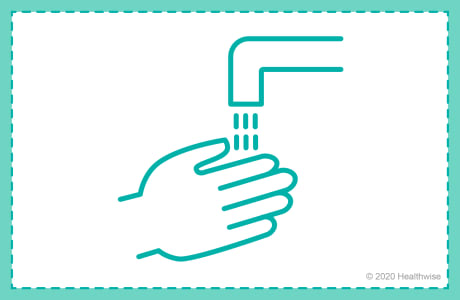Hand-Washing
Overview
Hand-washing is more than just running water over your hands. Washing your hands with soap and water is one of the best ways to prevent the spread of infections. It helps prevent diseases, such as colds, flu, and food poisoning. It's easy. It doesn't cost much. And it works.
When should you wash your hands?
Wash your hands:
- Often, especially during cold and flu season. This can reduce your risk of catching or spreading a cold or the flu.
- Before, during, and after you prepare food. This reduces your risk of catching or spreading bacteria that cause food poisoning. Be especially careful to wash before and after you prepare poultry, raw eggs, meat, or seafood.
- Before and after you care for someone who is sick. It's also important to wash your hands before and after you treat a cut or wound.
- Before you eat.
Wash your hands after you:
- Go to the bathroom or change diapers. This reduces your risk of catching or spreading diseases such as salmonella or hepatitis A.
- Cough, sneeze, or blow your nose.
- Handle or prepare foods, especially after you touch raw meat, poultry, fish, shellfish, or eggs.
- Touch an animal, animal waste, pet food, or pet treats.
- Handle garbage, use the phone, or shake hands.
5 steps for hand-washing
The U.S. Centers for Disease Control and Prevention recommends the following steps for hand-washing:
Wet your hands with clean, running water (warm or cold). Apply soap.

Lather your hands by rubbing them together with the soap.

Scrub your hands for at least 20 seconds. Scrub the backs of hands, between fingers, palms, and under nails.

Rinse your hands well under clean, running water.

Protect your hand with a paper towel when you turn off the faucet. Dry your hands using a clean towel, or air-dry them.

What if soap and water are not available?
If soap and water aren't available, use a hand sanitizer or alcohol-based hand wipe that contains at least 60% ethyl alcohol or isopropanol. Carry one or both with you when you travel, and keep them in your car or purse. These products can help reduce the number of germs on your hands. But they don't get rid of all types of germs.
If you use sanitizer, rub your hands and fingers until they are dry. You don't need to use water. The alcohol quickly kills many types of germs on your hands.
Related Information
Credits
Current as of: April 30, 2024
Author: Ignite Healthwise, LLC Staff
Clinical Review Board
All Ignite Healthwise, LLC education is reviewed by a team that includes physicians, nurses, advanced practitioners, registered dieticians, and other healthcare professionals.
Current as of: April 30, 2024
Author: Ignite Healthwise, LLC Staff
Clinical Review Board
All Ignite Healthwise, LLC education is reviewed by a team that includes physicians, nurses, advanced practitioners, registered dieticians, and other healthcare professionals.

